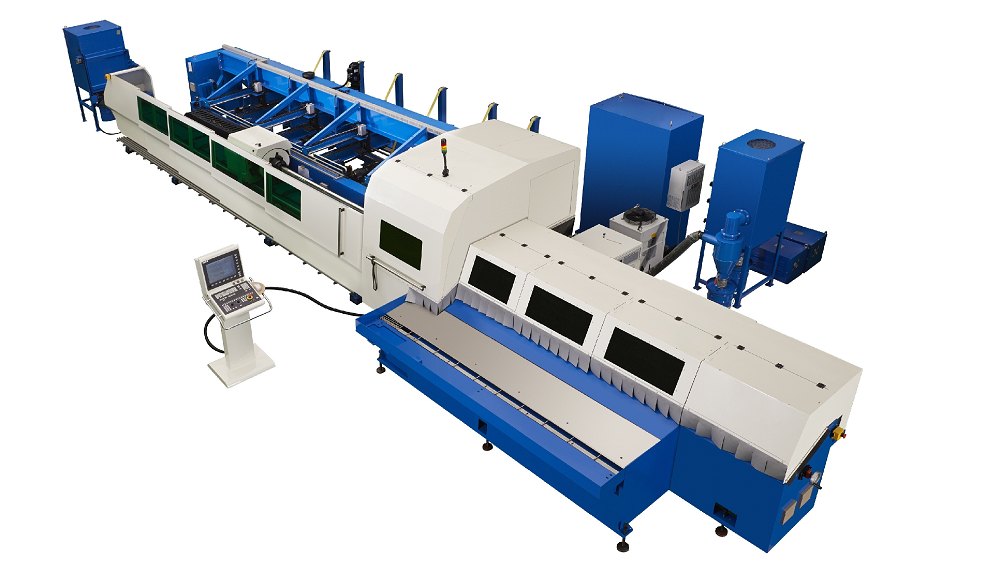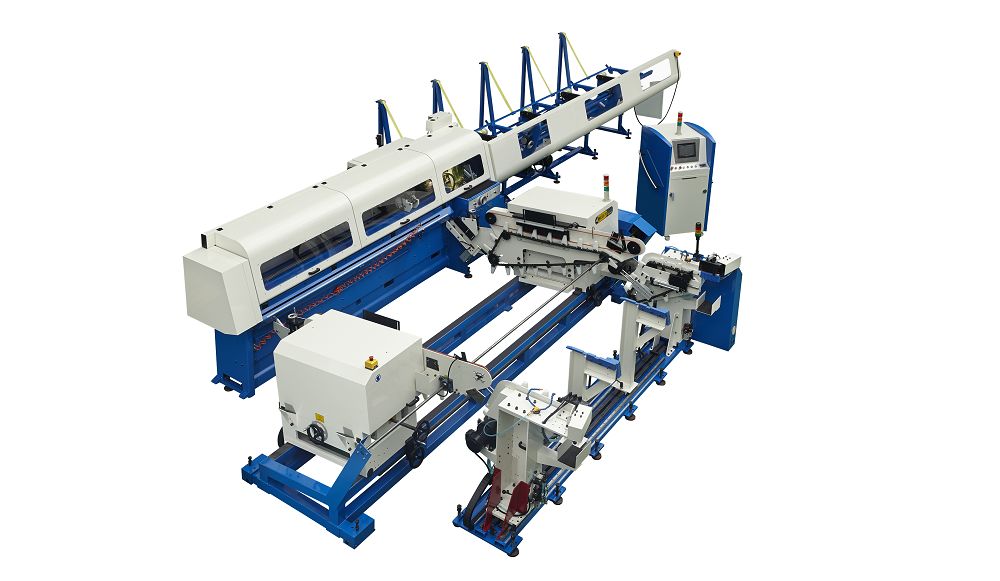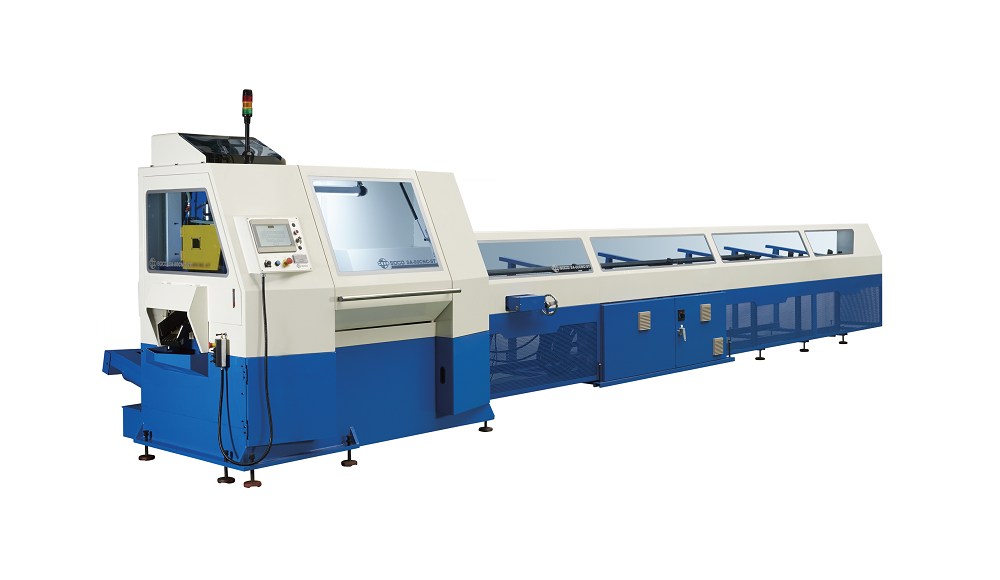In recent years, the advancement of smart manufacturing and customization trends has driven innovation in metal tube processing technologies. Laser tube cutting machines, known for their high precision and efficiency, have increasingly become the preferred choice in industries such as automotive, bicycle manufacturing, aerospace, construction, and more. However, traditional metal circular sawing machine still retain unique advantages when cutting thick pipes and solid steel bars. Each technology has its place in specific applications and industries, and no single solution has yet proven universally replaceable.
This article explores the differences between laser tube cutting machines and circular saws from the perspectives of working principles, performance, pros and cons, and application requirements, helping you choose the most suitable equipment for your needs.
What Is a Laser Tube Cutting Machine?
Laser tube cutting machines utilize high-energy-density laser beams to perform non-contact cutting on metal tubing. Because there is no mechanical force involved, the workpiece remains unaffected by deformation or heat distortion, allowing for ultra-precise machining. The laser's focus point is extremely small (approximately 0.1mm in diameter), and each cut removes only about 0.02mm of material, significantly minimizing waste.
These machines can handle a wide variety of shapes (round, square, oval, and complex profiles) and materials (stainless steel, aluminum alloy, carbon steel, copper, titanium, etc.).

With CAD/CAM input, the cutting process can be programmed for automated operation, rapid scheduling, and shorter development lead times. When paired with auto loading and unloading systems, CNC tube benders, and chamfering machines, a fully automated production line can be established to greatly improve efficiency and precision.

Types of Lasers for Metal: Fiber Laser vs. CO2 Laser
Laser tube cutting machines mainly use either fiber lasers or CO2 lasers as the light source.
Fiber laser machines transmit the laser beam via fiber optics, resulting in a compact structure, stable optical path, and no need for mirror adjustments. With electro-optical conversion efficiency of 25–30%, they significantly outperform CO2 lasers (8–10%). Fiber lasers are particularly effective at cutting reflective materials like aluminum and copper and offer cutting speeds up to twice as fast as similarly powered CO2 lasers. The focused laser beam is finer, producing exceptionally smooth cutting surfaces. Maintenance is minimal due to the absence of optical mirrors. However, fiber lasers cannot cut solid bars and are limited to tubes and hollow sections.
By contrast, CO2 laser cutting machines output continuous beams and generally offer high power levels (1000–3000W), making them suitable for cutting stainless steel and carbon steel under 6mm thickness. However, their large system footprint and reliance on multiple optical mirrors require complex maintenance. While CO2 lasers may produce smoother surfaces in some contexts, they struggle with reflective materials like aluminum. Furthermore, CO2 systems need high-purity gas and frequent mirror and lens calibration, making them more costly and energy-intensive to operate. As fiber laser technology continues to mature and decrease in cost, it is increasingly replacing CO2 lasers in high-precision, high-volume applications.
Overview of Metal Circular Sawing Machine
Metal circular saws, or tube cutting machines (sometimes called cold saws or metal saws), are traditional tube cutting devices using TCT (tungsten carbide-tipped) or HSS (high-speed steel) blades. These saws excel at cutting thick-walled pipes and solid steel bars, offering lower initial investment costs and mature, widely available technical expertise. With their simple structure and easy operation, they remain a staple in many workshops for quick, straightforward cuts.
However, circular saws produce rougher cuts with burrs, requiring secondary chamfering or grinding. Blade wear occurs rapidly, especially when cutting high-tensile or hard materials, leading to high consumable costs. They are not ideal for complex geometries, being mostly limited to straight cuts on round or square tubes. Traditional saws are typically stand-alone systems with limited automation, making it difficult to integrate them into fully automated workflows.

Laser Tube Cutting vs. Metal Circular Saw – Pros and Cons
- Precision: Laser cutting offers extremely high accuracy, with tolerances under 0.03mm. In contrast, circular saws typically have tolerances of ±0.2mm or more.
- Cutting Speed: Laser cutting speeds are significantly faster. What takes an hour on a manual circular saw can be completed in minutes with a laser cutter.
- Edge Quality: Laser cuts are smooth and virtually burr-free; circular saws require post-processing such as chamfering.
- Automation: Laser machines are digitally controlled and easily integrated with auto loaders, robots, tube benders, and chamfering units. For example, Laser tube cutting system connects with chamfering, measuring, and stacking modules to form a complete automation cell. In contrast, circular saws typically operate standalone and lack integration with ERP/MES systems.
- Consumables and Operating Costs: Laser machines require no blades and generate minimal material loss (~0.02mm per cut). Circular saws lose ~2mm per cut and require frequent blade replacements. Fiber lasers consume 20–30% less power than CO2 lasers. Maintenance is minimal.
- Material Compatibility: Laser cutters handle a wide range of alloys and complex shapes. Circular saws are best for carbon steel and standard shapes. High-tensile tubes wear out saw blades quickly.
- Flexibility: Laser tube cutting systems allow rapid program changes without tooling. Circular saws require downtime for blade/tool changes.
- Investment Cost: Laser systems have higher upfront costs. Circular sawing machine are more budget-friendly for simple jobs.
- Solid Bar Cutting: Laser machines cannot cut solid bars. Circular saws can handle both tubes and solid materials.
Market Trends in Metal Laser Tube Cutting
Global demand for metal cutting equipment remains strong, especially for laser technologies. According to Fortune Business Insights, the global laser cutting market is expected to grow from USD 6.31 billion in 2024 to USD 14.14 billion by 2032, with a CAGR of 10.9%. This growth is driven by increasing customization, smart factory integration, and energy-efficient production mandates. In industries like EVs, aerospace, and construction, the need for lightweight, high-precision tubing is fueling laser cutter adoption.

Cutting High-Hardness Tubes – Challenges & Laser Solutions
Cutting high-strength steel (e.g., automotive high-tensile tubing) is challenging for traditional circular saws. As stiffness and tensile strength increase, saw blade life decreases and cutting speeds slow significantly. For example, a single blade may require sharpening or replacement after cutting just 1,000 high-strength tubes.
Fiber lasers excel in these applications by offering fast, stable, and precise cutting of hard materials without physical contact. CNC control ensures consistent results and prevents bending or deformation. Many manufacturers are replacing circular saws with fiber laser tube cutters to reduce costs and boost productivity.
Challenges in Tube Manufacturing and Laser Cutting Solutions
Tube manufacturers today face increasing product variety, tighter lead times, labor shortages, and cost pressures. Laser cutting offers effective solutions:
- Customization: Program-based switching supports rapid scheduling for diverse tube shapes.
- Short Lead Times: No tooling needed; changing jobs is as simple as switching programs.
- Labor Efficiency: CNC control and automation reduce reliance on skilled operators.
- Cost Reduction: High precision reduces scrap; contactless cutting lowers tool wear.
Automation Integration for Laser Tube Cutting Field
Modern laser cutting systems offer powerful automation capabilities:
- Auto loaders and unloaders enable unmanned feeding
- ERP/MES connectivity for smart scheduling
- Seamless integration with tube benders and chamfering stations
- Modular design supports add-ons like deburring, length measuring, and stacking
- With up to 10-axis control and 1–2kW fiber lasers, these systems deliver smart, flexible, and highly productive tube processing cells for next-gen manufacturing lines.

Conclusion: Coexistence of Laser and Circular Saw Technologies
Fiber laser cutting represents the future of tube processing—delivering superior precision, speed, automation, and flexibility. For high-strength or complex tube profiles, laser cutting is the clear winner. However, traditional circular saws remain invaluable for solid bars and thick-wall pipes, especially for straight, high-volume cuts.
In short:
Both technologies have their place. Use laser cutters for complex, high-precision work and circular saws for heavy-duty, straightforward applications.

Interested in learning more about fiber laser cutting solutions or traditional sawing technologies?
Visit at: https://www.soco.com.tw/product/laser_cutting_machines?lang=en
References:
Laser Cutting Machines Market Report
https://www.fortunebusinessinsights.com/laser-cutting-machines-market-102879









